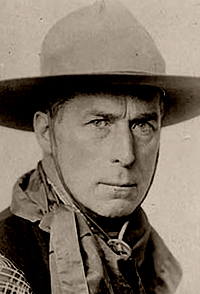
Andrew G. Fried
The waiting game can be frustrating, for all parties involved. In the case of the proposed 56-million-ton Cemex gravel mine in Soledad Canyon, those of us who have been working toward a solution have endured a long wait, and it’s not over just yet.
After several years of close calls and misfires on a legislative solution that would have canceled the Cemex mining contracts — sparing our region from the mine’s negative impacts and compensating Cemex for the contracts’ cancellation — now the wait also seems to hinge upon a squabble between Cemex and the Bureau of Land Management. The two have been playing a game of dueling lawyer letters in a dispute over whether Cemex has taken the steps it is contractually obligated to take in order to start mining.
While the clock keeps ticking, the original approval of the mining contracts – and the environmental documentation upon which the approvals were based – moves further and further into the rear-view mirror.
As time has passed, the wait has gotten us to thinking: Like a jug of milk that has spent too much time in the refrigerator, the environmental support documents for the proposed Cemex mine are well past their “best if used by” date.
Go ahead. Smell it. If you dare.
Think of what has changed since August 2000, when the final environmental impact report-statement for the Cemex mine received the stamp of approval from the BLM.
First of all, and perhaps most notably, the air quality impact studies for that EIR/EIS were already a bit stale by the time of the BLM’s approval. The results — which acknowledged that some impacts on air quality simply could not be mitigated — were years in the making, at a time when air quality testing methods, standards and technology were in flux.
At the time, the conversation focused primarily on what the scientists call “PM-10” particulate matter — particles with diameters of 10 micrometers or less. That’s about one-seventh the width of a human hair.
In the ensuing years, scientific studies have focused more on PM-2.5 — smaller airborne particles, like those that would be generated from activities such as gravel mines. The tiny PM-2.5 particles are actually an even greater threat to human health, especially among vulnerable populations like children, those with health issues, and the elderly.
Can we risk the Santa Clarita Valley’s health and safety on the word of an environmental study that was approved 14 years ago and was already bordering on obsolete at that time? What is more important – the revenue the mine might generate or your child’s ability to breathe?
Other things have changed, too, in the decade and a half since the Soledad mega-mine documents were approved.
Traffic patterns and volume have changed. How will the impact of 1,164 daily gravel truck trips affect the Santa Clarita Valley now, knowing what we know, compared to what was known 15 years ago?
Further, new residential development has occurred, including homes that have been built in close proximity to the proposed Cemex mine site. There are housing tracts within sight of the mining site that did not exist when the environmental documents were written.
And, in the interim, we’ve experienced a little thing called a drought. Even in 2000, it was projected that the Soledad mine would need a great deal of water to hose down trucks, and to try vainly to mitigate dust pollution. It was projected that during each of the mine’s first 10 years, it would chug through the equivalent of the annual water supply of more than 440 homes. That projection increased to more than 725 homes for the mine’s second 10 years of existence.
Gravel mines are thirsty. Is this really the time to allocate that much water to such a massive mine that isn’t needed for local construction? Further, would pressure to conserve water only serve to make the air pollution even worse?
Hopefully we’ll never know the answer to those questions. It’s time for all sides to at last find a resolution that spares our region’s residents from the devastating impacts of this mine.
The waiting has gone on long enough.
Andrew G. Fried is president of Safe Action for the Environment Inc. To find more information regarding SAFE and the proposed mine in Soledad Canyon, visit www.Safe4Environment.org.
Like this:
Like Loading...
Related






 Tweet This
Tweet This Facebook
Facebook Digg This
Digg This Bookmark
Bookmark Stumble
Stumble RSS
RSS








































REAL NAMES ONLY: All posters must use their real individual or business name. This applies equally to Twitter account holders who use a nickname.
1 Comment
Go get enough Andy